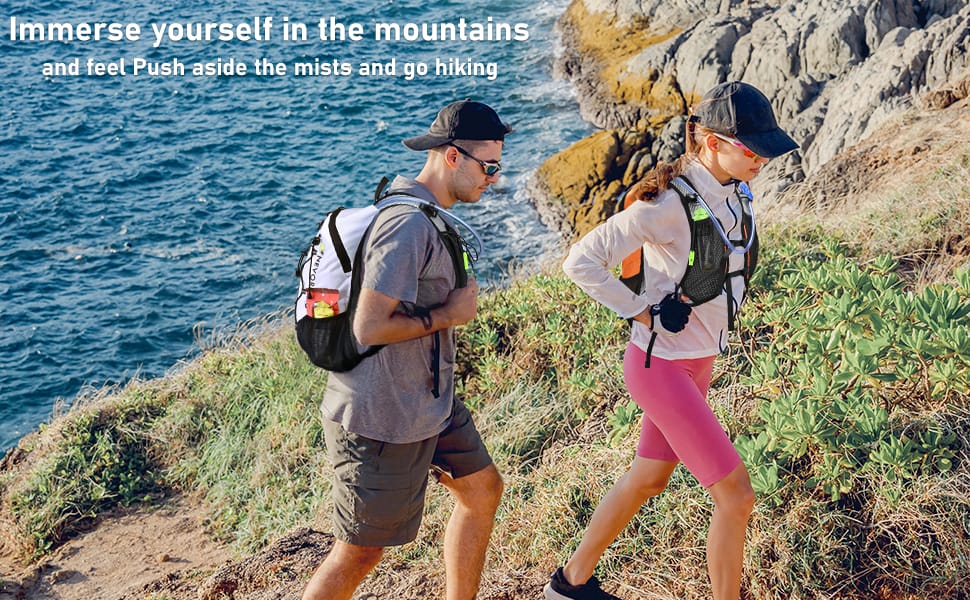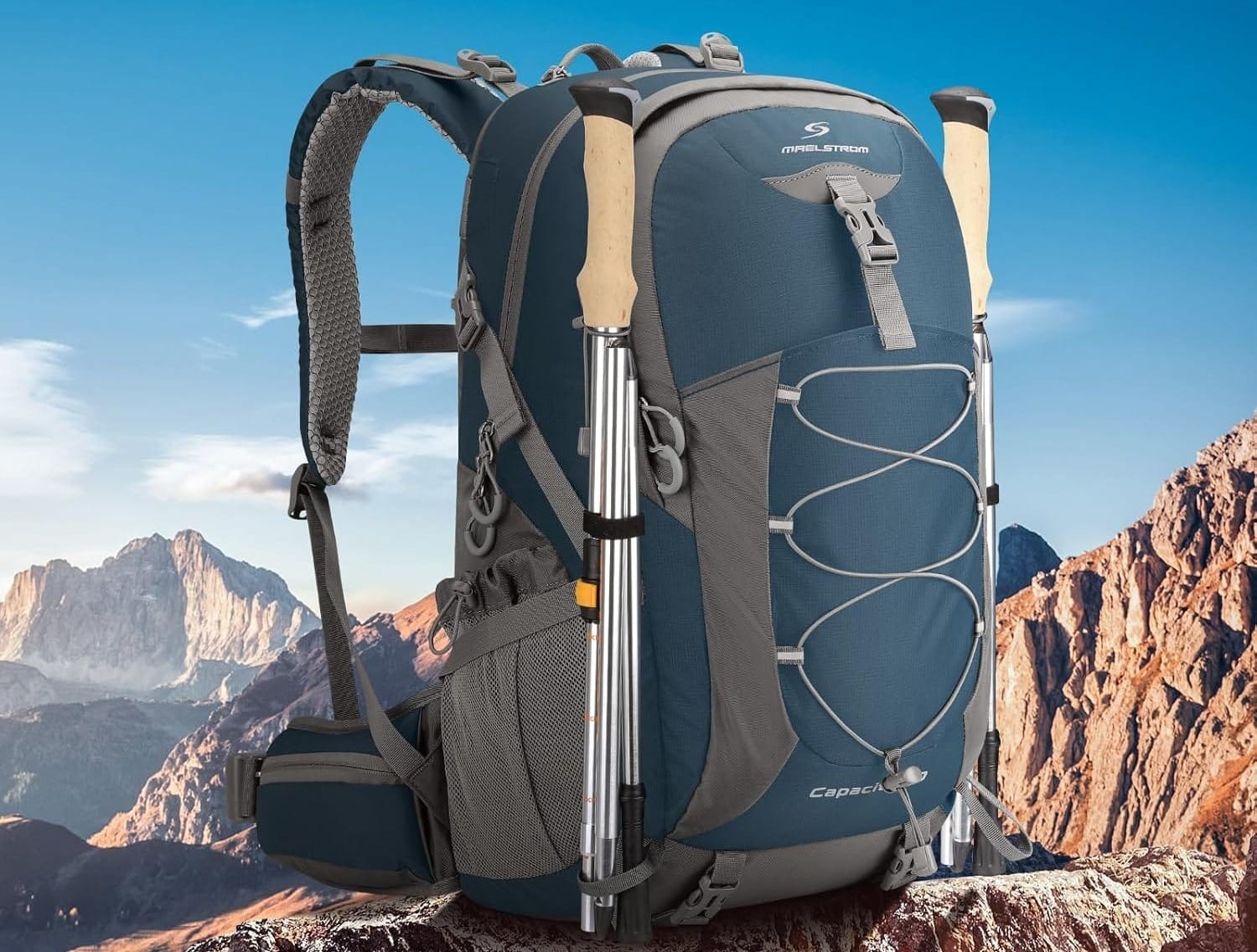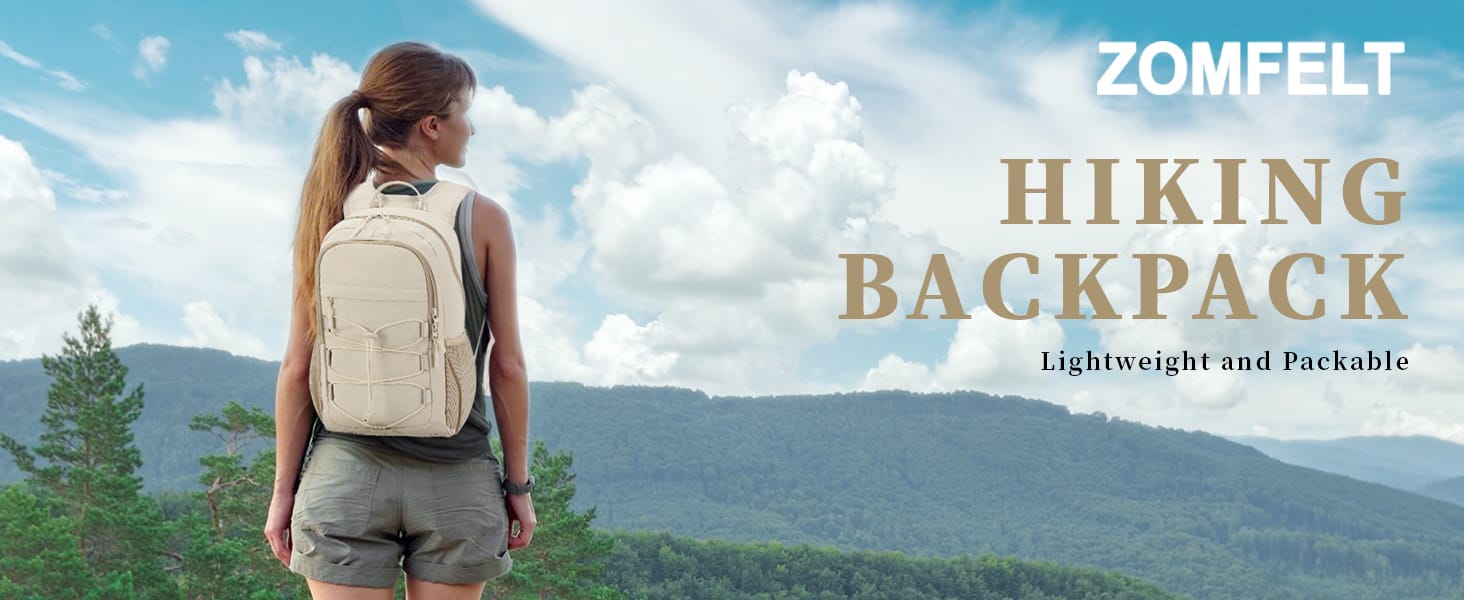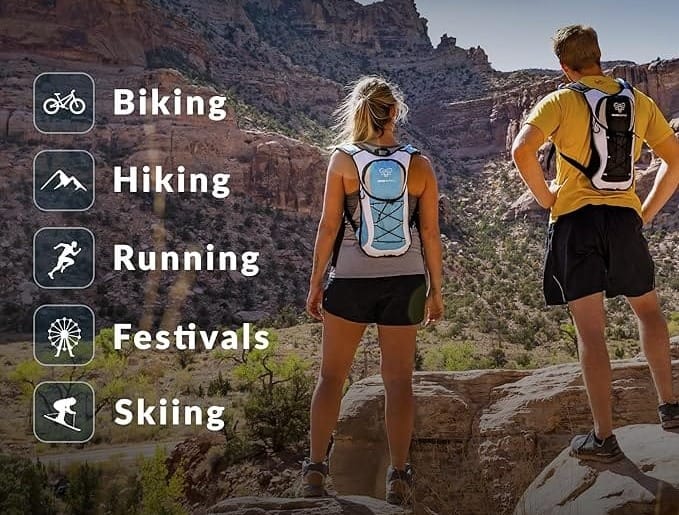Choosing a Perfect Hiking Backpack: A Guide for Trail Adventures
Discover how to choose the perfect hiking backpack for comfort, capacity, and durability on the trail. Get tips for beginners and seasoned hikers alike.

Embarking on a hiking adventure in the United States is an exhilarating experience, connecting you with nature and offering a much-needed escape from daily life. Whether you’re trekking through the Appalachian Trail, exploring national parks, or enjoying a weekend in the wilderness, the right hiking backpack is your most essential gear.
This guide covers everything you need to know about choosing the best hiking backpack in 2025, including expert buying advice, in-depth reviews of top products, and answers to the most common questions hikers ask.
Why the Right Hiking Backpack Matters
A well-chosen hiking backpack can make the difference between an enjoyable, comfortable journey and a grueling, painful ordeal. The perfect pack fits your body, carries your gear efficiently, and withstands the rigors of the trail. With the post-pandemic surge in outdoor activities, more Americans than ever are hitting the trails, making it crucial to select a backpack that matches your hiking style and needs.
Buying Guide
How to Choose the Best Hiking Backpack
Selecting the best hiking backpack involves considering several key factors:
1. Capacity and Trip Duration
- Day Hikes (1–10 miles): Opt for packs between 20L and 35L. These are lightweight and provide sufficient space for essentials like water, snacks, a rain jacket, and first aid supplies.
- Overnight/Weekend Trips (1–3 nights): Choose packs in the 30L–50L range. These accommodate extra clothing, a sleeping bag, and a camping stove.
- Multiday/Extended Trips (3–5+ nights): Look for packs from 50L to 80L or larger. These are ideal for carrying extra food, clothing, and gear for longer adventures.
- Winter or Expedition Trips: Consider packs over 70L for bulky winter gear and extended expeditions.
2. Fit and Comfort
- Torso Length: Ensure the pack’s harness matches your torso length for optimal weight distribution and comfort.
- Hip Belt: A padded, adjustable hip belt transfers weight from your shoulders to your hips, reducing fatigue.
- Shoulder Straps: Look for padded, ergonomic straps with load-lifters for better support.
3. Features and Organization
- Compartments: Multiple pockets and compartments help organize gear for easy access.
- Water Bladder Compatibility: Essential for hands-free hydration during long hikes.
- External Attachment Points: For trekking poles, ice axes, or sleeping mats.
- Rain Cover: Protects your gear from the elements.
- Reflective Elements: Enhances visibility for safety during low-light conditions.
4. Materials and Durability
- Nylon and Ripstop Nylon: Lightweight, durable, and water-resistant. Ripstop adds extra tear resistance.
- Cordura Nylon: Ultra-durable, ideal for rugged expeditions.
- Waterproofing: Look for water-resistant coatings or included rain covers.
5. Weight
- Lightweight Packs: Ideal for day hikes and fast-and-light trips.
- Heavier Packs: Offer more support and features for extended trips.
Top Picks
Here are five top-rated hiking backpacks for 2025, each suited to different hiking styles and needs.
1. N NEVO RHINO Lightweight Hydration Backpack
Editor Choice Product

Editor Recommendation:
The N NEVO RHINO is an outstanding choice for runners, fast hikers, and anyone who values hydration on the go. Its lightweight design and integrated 2L water bladder make it perfect for day hikes, cycling, or even festivals.
Pros:
- Ultra-lightweight (8.5 oz)
- 2L leakproof, anti-popping water bladder
- Waterproof and tear-resistant fabric
- Comfortable, breathable, and adjustable straps
- Thoughtful storage for essentials
- Affordable price point
Cons:
- Limited capacity (12L) – best for short trips or as a supplementary pack
- Not suitable for overnight or multi-day trips
Best For: Day hikes, running, cycling, and events where hydration is key.
2. Maelstrom Hiking Backpack

Editor Recommendation:
The Maelstrom Hiking Backpack is a versatile, mid-capacity pack ideal for hikers, campers, and travelers who want comfort and organization.
Pros:
- High-quality ripstop 210D nylon for durability and water resistance
- Ergonomic, padded back and adjustable shoulder straps
- 40L capacity – suitable for extended day hikes or short overnight trips
- Multiple compartments, including a waterproof wet pocket
- Special features: elastic sides for trekking sticks, headphone hole, and Velcro for water bag liner
- Included rain cover
Cons:
- Limited color options
- Moderate accessibility to the bottom items
- Reflective signs placement could be improved for safety
- Minor learning curve for strap adjustments
Best For: Hikers seeking comfort, durability, and organization for day or overnight trips.
3. ZOMFELT Hiking Backpack for Women and Men

Editor Recommendation:
The ZOMFELT is a compact, packable backpack ideal for light day hikes, travel, and as an extra pack for side missions.
Pros:
- Ultra-lightweight and packable
- Available in 15L and 20L sizes
- Water-resistant material
- Multiple pockets for organization
- Comfortable for short hikes and travel
Cons:
- Limited capacity – not suitable for overnight trips
- Minimal padding and support for heavy loads
Best For: Day hikes, travel, and as a secondary pack for short adventures.
4. BECOJADDE 15L Small Hiking Backpack

Editor Recommendation:
The BECOJADDE is another excellent option for minimalists, travelers, and those needing a lightweight, foldable pack.
Pros:
- Lightweight and foldable for easy storage
- 15L capacity – perfect for essentials on short hikes
- Water-resistant fabric
- Multiple compartments for organization
- Affordable and versatile
Cons:
- Not suitable for heavy loads or overnight trips
- Limited support and padding
Best For: Travelers, minimalists, and short day hikes.
5. Water Buffalo Lightweight Hydration Backpack

Editor Recommendation:
The Water Buffalo Hydration Backpack is a reliable choice for those who prioritize hydration and comfort on the trail.
Pros:
- Lightweight and comfortable
- Integrated hydration bladder (typically 2L or 3L)
- Water-resistant and durable material
- Adjustable, breathable straps
- Thoughtful storage pockets

Cons:
- Limited capacity – ideal for day hikes only
- Not suitable for overnight or multi-day trips
Best For: Day hikers, runners, and cyclists who need reliable hydration.
Top 5 Hiking Backpacks Comparison
| Backpack Name | Capacity | Weight | Key Features | Best For | Price Range |
|---|---|---|---|---|---|
| N NEVO RHINO | 12L | 8.5 oz | 2L bladder, waterproof, lightweight | Day hikes, running, events | $20–$30 |
| Maelstrom Hiking Backpack | 40L | ~2.5 lbs | Ripstop nylon, rain cover, ergonomic | Day/overnight hikes | $50–$70 |
| ZOMFELT Hiking Backpack | 15L/20L | ~0.5 lbs | Packable, water-resistant | Day hikes, travel | $20–$30 |
| BECOJADDE 15L | 15L | ~0.5 lbs | Foldable, water-resistant | Day hikes, travel | $20–$30 |
| Water Buffalo Hydration Pack | 12–15L | ~0.8 lbs | Hydration bladder, breathable | Day hikes, running | $30–$40 |
FAQs
About Hiking Backpack
1. What size hiking backpack do I need for a day hike?
Answer: For a standard day hike, a backpack with a capacity of 15 to 30 liters is typically ideal. The exact size you need depends on a few key factors:
1. Duration of Your Hike
- If you're planning a short hike (2–4 hours), a 15–20L backpack is usually enough. It can hold water, snacks, a light jacket, sunscreen, and small essentials.
- For longer day hikes (5–10 hours), especially in variable weather or remote areas, go for a 20–30L pack. This gives you room for extra layers, more food and water, a first aid kit, and possibly a compact camera or trekking poles.
2. Weather and Season
If you’re hiking in colder or changing weather, you’ll need more space for layers, gloves, or rain gear—making the 25–30L range more appropriate. In warm, predictable conditions, a smaller pack works fine.
3. Personal Preferences and Gear
Some hikers like to carry extra gear like:
- Water bladder systems
- DSLR cameras
- Binoculars
- Compact stove or coffee maker
If you're one of them, a slightly bigger pack gives you flexibility without being cumbersome.
4. Hydration Pack vs. Backpack
For minimalist hikers or runners, a hydration pack (10–15L) with room for a water reservoir and a few essentials can work perfectly for fast-and-light hikes.
For most people, a 20–25L hiking backpack strikes the right balance for day hikes—lightweight yet roomy enough for all your trail needs.
Let your hiking style, trail conditions, and weather guide your final choice!
2. How do I ensure my backpack fits properly?
Answer: Ensuring your backpack fits properly is essential for comfort, especially on long hikes. A poor fit can lead to shoulder pain, back strain, and fatigue. Here's a step-by-step guide to help you get the perfect fit:
1. Measure Your Torso Length (Not Your Height)
Backpack sizes are based on torso length, not overall height. To measure yours:
- Ask someone to measure from the C7 vertebra (the bony bump at the base of your neck) down to the top of your hip bones (iliac crest).
- Compare your measurement with the brand’s sizing chart (e.g., small: 15–17", medium: 17–19", large: 19–21").
2. Adjust the Hip Belt First
The hip belt should sit on top of your hip bones, not above or below them. About 60-80% of the pack’s weight should rest on your hips. Tighten the belt snugly—your hips should carry most of the load.
3. Tighten the Shoulder Straps
After securing the hip belt, pull down the shoulder straps. They should wrap smoothly around your shoulders with no gaps. The straps should feel snug but not pinch or dig into your shoulders.
4. Use the Load Lifters
Located near the top of your shoulder straps, these small straps should form a 45-degree angle with the backpack. Tightening them helps pull the pack closer to your body and improves weight distribution.
5. Adjust the Sternum Strap
This chest strap connects the two shoulder straps and helps stabilize the load. Position it across your chest, not your neck. It shouldn’t restrict your breathing—just offer support.
6. Fine-Tune with a Test Hike
Try walking around with the fully loaded backpack. Adjust as needed while you move. Make sure there's no pinching, rubbing, or shifting.
Quick Fit Tips:
- Women's packs are shaped differently for narrower shoulders and shorter torsos.
- Kids’ packs are adjustable to accommodate growth.
- Never carry more than 20–25% of your body weight in your backpack.
A well-fitted backpack not only improves comfort but also helps prevent injuries and makes your adventure more enjoyable. Take the time to adjust it properly—your body will thank you on the trail!
3. What features should I look for in a hiking backpack?
Answer:
When choosing a hiking backpack, it’s essential to look for features that match your trip length, terrain, and personal comfort. Here are the key features to consider:
1. Capacity (Size)
- Day Hikes (15–30L): Ideal for short trips. Fits essentials like water, snacks, and a light jacket.
- Weekend Trips (30–50L): Enough space for clothes, a sleeping bag, and basic camping gear.
- Multi-Day Treks (50–70L+): Needed for longer adventures or cold weather gear.
2. Fit and Comfort
- Adjustable Torso Length & Hip Belt: A good fit is crucial. The majority of the weight should rest on your hips, not your shoulders.
- Padded Straps & Ventilation: Look for padded shoulder straps, a ventilated back panel, and load-lifter straps for ergonomic support.
3. Frame Type
- Internal Frame: Most common today—keeps the load stable and close to your body, good for rough terrain.
- External Frame: Better for carrying heavy, uneven loads but less common now.
- Frameless: Lightweight, suitable for minimalist hikers or very short hikes.
4. Material & Durability
- Go for water-resistant nylon or polyester with reinforced stitching. Consider packs with a rain cover or built-in waterproof compartments.
5. Pockets & Organization
- Main Compartment + Side Pockets: Easy access to water, snacks, and layers.
- Hip Belt Pockets: For small items like sunscreen, lip balm, or a GPS.
- Hydration Sleeve: Many modern packs include sleeves for a hydration bladder.
6. Weight
- Lighter packs are better for long hikes but might sacrifice some durability or support. Balance weight and features based on your hike duration and needs.
7. Attachment Points
- Loops for trekking poles, sleeping bag straps, ice axe holders, etc. These are essential for specialized gear and comfort on the trail.
8. Ventilation
- A mesh back panel or suspended mesh design can keep your back cooler during hot or humid hikes.
9. Versatility
- Some backpacks are modular with detachable daypacks or allow you to compress the size for shorter hikes.
10. Budget
- Prices vary based on brand, size, and features. More expensive doesn't always mean better—find what fits your specific needs and comfort best.
Final Tip: Always try on the backpack (with weight in it) before purchasing, if possible. Comfort and fit can’t be judged just by specs or brand.
4. Can I use a hiking backpack for travel or other outdoor activities?
Answer: You can use a hiking backpack for travel and other outdoor activities—in fact, many travelers and outdoor enthusiasts prefer them for their versatility, durability, and ergonomic design.
Here's why a hiking backpack works well for travel and other activities:
1. Comfort and Support
Hiking backpacks are designed for long hours of wear. They feature padded shoulder straps, hip belts, and adjustable frames that evenly distribute weight, reducing strain on your back and shoulders. This makes them excellent for airport navigation, city walking, or trekking across rural landscapes.
2. Capacity and Organization
Most hiking backpacks offer multiple compartments, gear loops, and zippered sections, which help keep your items organized—whether it’s clothes, toiletries, electronics, or travel documents. Some even have hydration sleeves that can double as laptop compartments.
3. Durability
Hiking backpacks are built for rugged environments. They're made from water-resistant or waterproof materials and can handle rough handling, making them more durable than standard travel backpacks or suitcases—especially in unpredictable weather or terrain.
4. Multi-Use Scenarios
Besides hiking and travel, these backpacks are perfect for:
- Camping trips
- Beach days
- Cycling commutes
- Road trips
- Photography expeditions
5. Airline Carry-On Compatibility
Many hiking packs (30–40L range) meet carry-on size restrictions for most airlines, especially those with a slim profile and stowable straps.
- Not all hiking backpacks are ideal for urban travel – Their rugged appearance may not blend well in city settings, and they might lack anti-theft features.
- Top-loading designs can be inconvenient when accessing items quickly, unlike traditional suitcases or travel backpacks with front-loading zippers.
If you're looking for a single backpack that adapts to multiple activities, a hiking backpack is a smart investment. It can handle everything from airport hopping to mountain hiking, making it a favorite among minimalists, adventurers, and digital nomads.
5. How do I maintain and clean my hiking backpack?
Answer: Keeping your hiking backpack clean and well-maintained not only extends its life but also ensures it performs well on every adventure. Here's a step-by-step guide to help you clean and maintain it properly:
🧼 How to Clean Your Hiking Backpack
1. Empty Everything Out
Start by completely emptying your backpack. Check all pockets, remove the frame if possible, and shake out any dirt or debris.
2. Read the Care Label
Every backpack is a bit different. Some are machine washable, but most should be cleaned by hand. Always follow the manufacturer's instructions.
3. Spot Clean First
Use a soft brush or cloth with mild soap (non-detergent) and cold water to gently scrub dirty spots. Avoid harsh chemicals that may damage the fabric or waterproof coating.
4. Soak for a Deep Clean (If Needed)
If your pack needs a thorough wash:
- Fill a bathtub or large basin with cold water and mild soap.
- Submerge the pack and gently scrub with a soft sponge or brush.
- Pay extra attention to sweat-prone areas like shoulder straps and the back panel.
5. Rinse Thoroughly
Rinse the backpack with clean water until all soap is removed. Avoid using high-pressure water which can damage zippers or seams.
6. Air Dry Properly
Never use a dryer. Hang the pack upside down in a well-ventilated area, preferably outdoors in the shade. Keep it out of direct sunlight to prevent UV damage.
🔧 How to Maintain Your Backpack
1. Regularly Inspect It
Check for loose threads, broken zippers, or damaged buckles. Address minor repairs early before they turn into bigger issues.
2. Keep It Dry
After hikes, especially in rainy or humid conditions, always air out your backpack to prevent mold or mildew.
3. Store It Properly
Store your backpack in a cool, dry place. Don’t compress it tightly for long periods—this can ruin the shape and padding.
4. Use a Rain Cover
Using a rain cover not only protects from water but also keeps your bag cleaner on muddy trails.
5. Avoid Overloading
Consistently overstuffing your backpack can strain seams and zippers. Pack efficiently and use the weight rating as a guide.
✅ Bonus Tip:
For quick freshening up between trips, use a damp cloth to wipe down the outer shell and straps, and sprinkle a bit of baking soda inside to absorb odors.
Key Takeaways
Choosing the right hiking backpack is essential for a safe, comfortable, and enjoyable outdoor experience. Whether you’re a day hiker, trail runner, or planning a multi-day adventure, there’s a perfect pack for your needs. The N NEVO RHINO Lightweight Hydration Backpack stands out as the editor’s choice for its unbeatable combination of comfort, hydration, and value. For longer trips, the Maelstrom Hiking Backpack offers durability and organization. Lightweight options like the ZOMFELT, BECOJADDE, and Water Buffalo are ideal for short excursions and travel.
